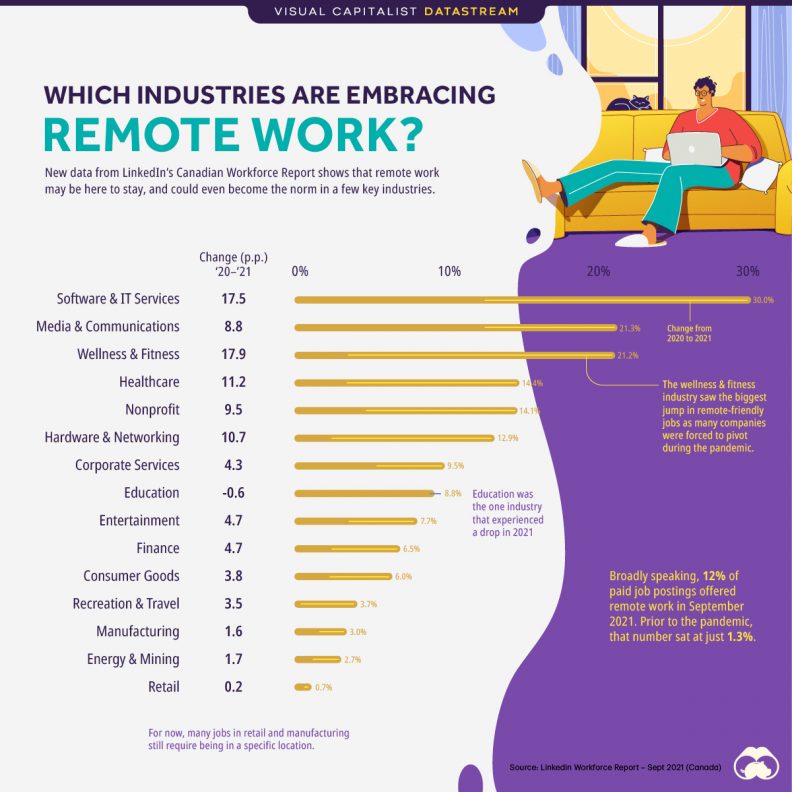Remote Work and the Invisible Office
The future of remote work is here. Today, according to a Harvard Business Review study, 42% of organizations believe the majority of their workforce can perform their job remotely. That is an increase from 14% before the coronavirus pandemic. If your business can’t support remote work, you may be at an incredible hiring and competitive disadvantage — especially in the IT, Communications, Wellness, and Healthcare industries. According to new data from LinkedIn, Software and IT Services witnessed a 17.5% increase in remote work from September 2020 to September 2021 with 30% of new job postings listed as remote. The data comes from a survey of job postings on LinkedIn and was revealed in LinkedIn’s Workforce Report for September 2021. LinkedIn analyzed hundreds of thousands of paid remote job postings in Canada posted on LinkedIn between February 2020 and September 21, 2021. A “remote job” is defined as one where either the job poster explicitly labeled it as “remote” or if the job contained keywords like “work from home” in the listing. A visual summary of the findings is in the Visual Capitalist infographic below.

The tech and healthcare industries clearly displayed big shifts towards remote work, with technologies such as telemedicine driving remote opportunities in healthcare. Uncertainty around future outbreaks and physical distancing requirements drove the shifts in other industries.
Fueled by advances in connectivity, remote work isn’t simply moving the office to our homes. Laptops, smartphones, and IoT devices have us constantly connected and create a virtual invisible office that is everywhere. Organizations are realizing that simply being present in an office is no longer an indicator of productivity. Virtual dashboards that measure objectives and key results by identifying goals and evaluating progress are empowering productivity without any reference to time in the office.
Businesses who can make technology work for them are leading the shift to work-from-anywhere and are attracting top talent as a result. The shift has revealed challenges in remote work but forward-thinking leaders are creating a remote work culture that overcomes the hurdles in favor of the agility and employee satisfaction that comes from remote opportunities.
Technological issues such as securing the remote workforce need to be addressed. Implementations of zero-trust architecture, the latest cybersecurity software and access portals are making us more secure regardless of location. Don’t get left behind, contact us today to see how technology can secure and empower your remote workforce.


![CISA Phishing Protection Recommendations [Infographic]](https://veruscorp.com/wp-content/uploads/bfi_thumb/dummy-transparent-ncnph3ey82v3yws1xhe3qrjzci23y2f2zeozbzixdu.png)
